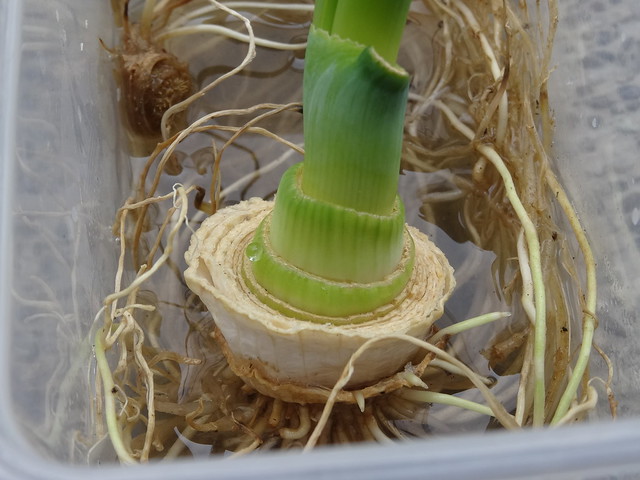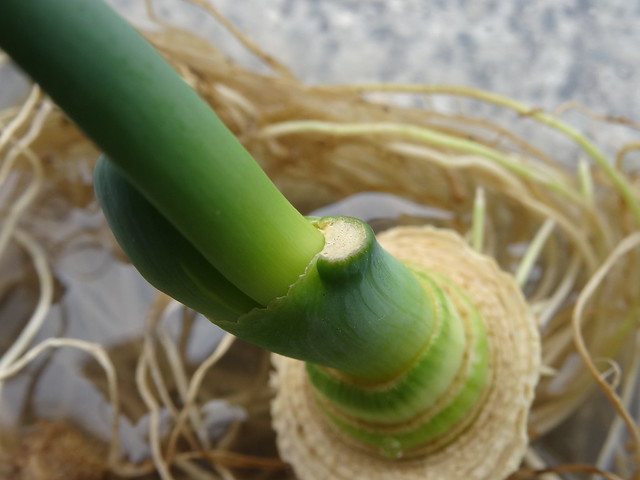喔,要注意喔,我前陣子去研習才知道有老師以為這切下來的一圈圈是洋蔥的莖,nonono這是葉子喔。

真正的莖是縱切以後在根上面一點點的那個地方。

找來找去,看到一篇資料,大概可以解惑。請參考底下連結的圖,我就連圖過來了
http://www.sbs.utexas.edu/mauseth/weblab/webchap10epi/10.2-15.htm
圖片中是洋蔥綠葉的橫切(不是上面幾張照片裡的鱗葉),可以看到上方(斜箭頭)的部份沒有表皮,只留下細胞的殘餘物,而下方(垂直箭頭)仍然可以看到表皮。原來綠葉的中空是因為葉子從中間裂開來了,而白色葉子(就是鱗葉)則是本來就是管狀葉
Fig. 10.2-15. Transverse section of onion leaf (Allium cepa). This leaf transverse section is different from most in this chapter: there is an epidermis on the lower side of the micrograph (vertical arrow points to a stoma), but there is no upper epidermis (diagonal arrow points to cell debris). This is from the green part of an onion leaf, not the white part. The green part of the leaf is hollow because the leaf tissues have torn apart, and that is what we are seeing on the top part of this micrograph. You can tell that the upper layer here is not an epidermis because the cells have irregular sizes and shapes. Although this layer lacks stomata, that is not an absolute criterion for saying that this is not epidermis: many true epidermises lack stomata (many petals and stamens, for example).
The white part of on onion – the part that we slice up to put on hamburgers or to make into onion rings – that part is also a hollow leaf, but it is hollow because it is tubular, not because it is torn apart. For details, see Ontogeny of unifacial leaves (page 265) and fig. 12.41 (page 264) in Plant Anatomy (Mauseth).
http://elte.prompt.hu/sites/default/files/tananyagok/StructureOfPlantsAndFungi/ch05s04.html
以下這個不是洋蔥,而是蔥,但也可以看出原先的綠葉在成長過程中,被內部長出的新芽鑽破,然後葉子繼續破裂,就成了管狀的葉子



